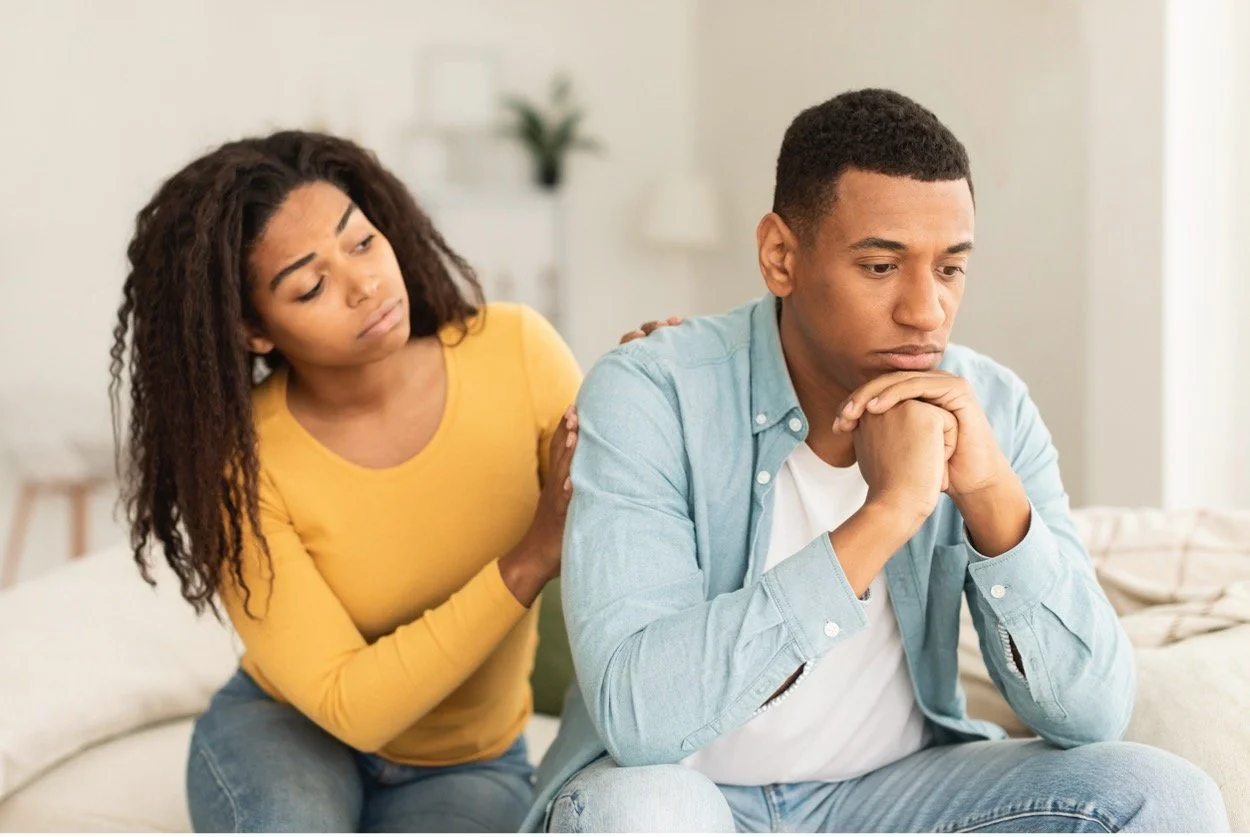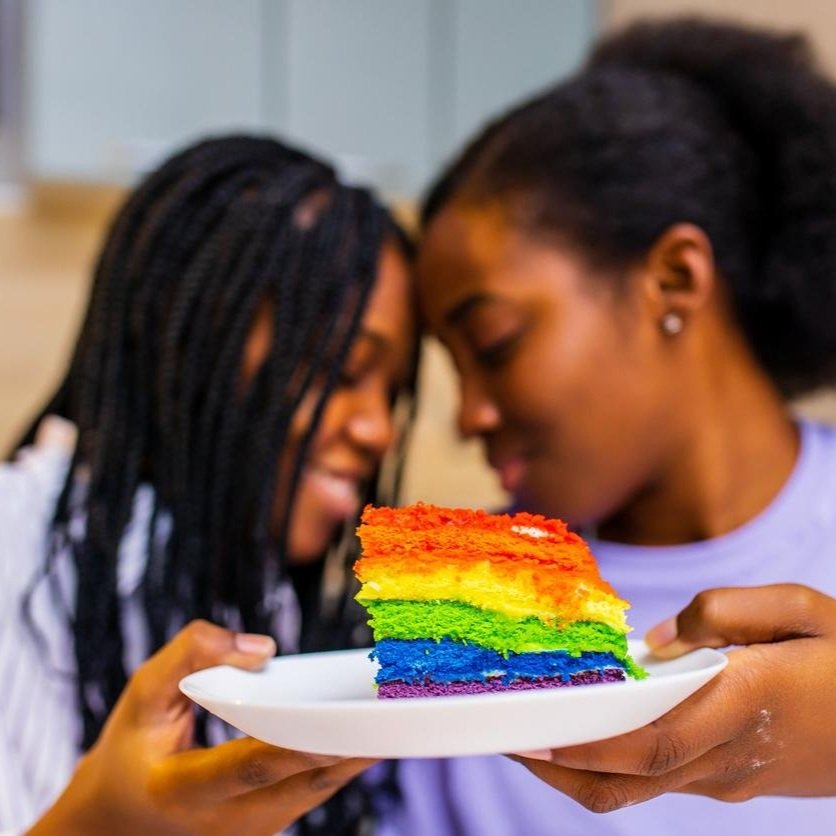Monkey Branching: What It Is and How It Happens
Understanding monkey branches in relationships helps to understand the behaviors of people who are still committed but seek new connections. This can provide insights into relationship dynamics and personal boundaries. We discuss it here!
Photo Credit: Media Lens King via iStockPhoto.com
By: Jamila Gomez
In modern relationships, the term "monkey branching" has become increasingly prevalent. It refers to the behavior of someone who, while still in a relationship, begins forming connections with potential new partners. Much like a monkey swinging from branch to branch, these individuals keep one relationship within reach while exploring others. Understanding monkey branching and how it manifests can provide valuable insights into relationship dynamics and personal boundaries.
What is Monkey Branching?
Monkey branching is a behavior characterized by seeking new romantic or sexual connections while still involved in an existing relationship. This often involves emotional or physical infidelity, where the person maintains their current relationship as a safety net while testing the waters with someone else. The term paints a vivid picture of the person metaphorically holding onto one "branch" (their current partner) while reaching out to another (a potential new partner), ensuring they always have a relationship to fall back on.
How Does Monkey Branching Happen?
Monkey branching typically unfolds in several stages, each marked by specific behaviors and underlying motivations:
1. Dissatisfaction or Uncertainty:
The individual may begin feeling unsatisfied, bored, or uncertain about their current relationship. This dissatisfaction can stem from unmet emotional needs, lack of excitement, or unresolved conflicts.
2. Seeking Attention and Validation:
To address their feelings of dissatisfaction, they start seeking attention and validation from others. This could involve increased flirting, frequenting social gatherings or online dating apps, and maintaining a heightened presence on social media platforms.
3. Forming New Connections:
The individual begins forming emotional or physical connections with potential new partners. These interactions may start innocently, such as friendly conversations or casual texting, but can quickly escalate to deeper emotional bonding or sexual encounters.
4. Emotional or Physical Infidelity:
At this stage, the person engages in behavior that constitutes infidelity, whether emotional or physical. They might share intimate details, express romantic interest, or engage in sexual activities with the new person while still committed to their current partner.
5. Maintaining Two Relationships:
For a period, they juggle both relationships, often deceiving their current partner about the extent of their involvement with someone else. This dual relationship dynamic can persist until the individual feels secure enough to transition fully to the new partner or is caught by their current partner.
Why Do People Engage in Monkey Branching?
Several factors can contribute to why someone might engage in monkey branching:
Fear of Loneliness: The fear of being alone can drive individuals to secure a new relationship before ending their current one.
Low Self-Esteem: People with low self-esteem may seek validation from multiple sources to boost their sense of self-worth.
Desire for Excitement: The thrill of a new romance can be enticing, especially if the current relationship has lost its spark.
Avoidance of Conflict: Ending a relationship can be difficult and confrontational. Monkey branching allows the individual to avoid this discomfort by ensuring they have a new partner lined up.
The Impact of Monkey Branching
Monkey branching can have significant emotional and psychological repercussions for all parties involved:
Betrayal and Trust Issues: The current partner often feels betrayed and may struggle with trust issues in future relationships.
Emotional Turmoil: The individual engaging in monkey branching may experience guilt, confusion, and stress from managing dual relationships.
New Relationship Challenges: The new partner may feel insecure knowing they were pursued while the individual was still in another relationship, potentially leading to trust and stability issues in the new relationship.
Monkey branching is a complex and often hurtful behavior that reflects deeper issues within an individual's emotional or relational landscape. Understanding its dynamics can help individuals recognize the signs, address underlying dissatisfaction in their relationships, and approach relationship transitions with honesty and integrity. By fostering open communication and self-awareness, people can build healthier, more respectful connections.
YOU MAY ALSO BE INTERESTED IN:
SHARE TO SOCIAL MEDIA
The Importance of Keeping Family and Friends Out of Your Relationship
Learn why maintaining privacy and autonomy from family and friends can enhance your romantic relationship, reduce external pressures, and foster a stronger, more resilient partnership. We discuss it here!
Photo Credit: Delmaine Donson via iStockPhoto.com
By: Jamila Gomez
Maintaining a healthy and thriving romantic relationship requires effort, communication, and mutual understanding between partners. One crucial aspect often overlooked is the influence of external parties—namely, family and friends. While their intentions are generally good, involving them too deeply in your relationship can lead to unintended consequences. Here, we explore the importance of keeping family and friends out of your relationship and how it contributes to a stronger, more resilient partnership.
1. Preserving Autonomy and Independence
A relationship is a unique bond between two individuals who should have the autonomy to make their own decisions. When family and friends become too involved, they can unintentionally impose their values, opinions, and expectations on the couple. This can undermine the independence of the partners, leading to decisions that might not align with their true desires and needs. By keeping others at a respectful distance, couples can ensure that their choices reflect their own aspirations and mutual understanding.
2. Reducing External Pressure
Family and friends often have their own ideas about what a relationship should look like, which can create unnecessary pressure. Expectations about marriage, children, financial management, and lifestyle choices can vary significantly from the couple's vision. When partners focus on each other's perspectives rather than external opinions, they are better able to navigate these areas without the added stress of meeting others' expectations.
3. Enhancing Conflict Resolution
Disagreements and conflicts are a natural part of any relationship. When these issues are shared with family and friends, it can complicate the resolution process. Outside parties may take sides, offer biased advice, or hold onto grievances longer than the couple themselves. This can exacerbate conflicts and make it harder for the couple to move past their issues. Keeping conflicts within the relationship fosters direct communication and helps partners develop their own conflict resolution skills.
4. Maintaining Privacy and Trust
Privacy is a cornerstone of a strong relationship. Sharing intimate details or conflicts with family and friends can feel like a breach of trust to your partner. It’s essential to create a safe space where both partners feel secure in expressing their thoughts and feelings without fear of external judgment. Maintaining privacy helps build a foundation of trust and respect, essential for a healthy relationship.
5. Building a Unified Front
Couples who keep their issues and decisions within the relationship tend to present a more united front. This unity is crucial when facing life's challenges, as it reinforces the partnership against external adversities. A strong, cohesive partnership can handle stressors more effectively, knowing that they are aligned and supportive of each other.
6. Encouraging Mutual Growth
Relationships thrive when both partners grow together. This growth can be stunted if family and friends are overly involved, as their influence can lead to dependency or stagnation. By navigating their relationship primarily as a duo, partners encourage each other's personal development and collective growth. They learn to rely on each other and become better equipped to handle life’s ups and downs together.
7. Minimizing Misunderstandings
Messages and intentions can become distorted when filtered through third parties. What might start as a simple disagreement can be blown out of proportion when shared with others, leading to misunderstandings and miscommunications. Keeping discussions and decisions within the relationship minimizes the risk of such distortions and ensures that partners understand each other directly.
While family and friends are invaluable sources of support, keeping them at a respectful distance from your relationship is crucial. It allows couples to preserve their autonomy, reduce external pressures, enhance conflict resolution, maintain privacy and trust, build a unified front, encourage mutual growth, and minimize misunderstandings. By focusing on each other and their unique bond, couples can navigate their relationship more effectively and build a stronger, more resilient partnership.
YOU MAY ALSO BE INTERESTED IN:
SHARE TO SOCIAL MEDIA
5 Ways to Revitalize Your Love Life and Strengthen Your Relationship
Revitalize your love life with these five practical tips, including surprise date nights, love letters, weekend getaways, revisiting your firsts, and learning new activities together. We discuss it here!
Photo Credit: skynesher via iStockPhoto.com
By: Jamila Gomez
Every relationship experiences ebbs and flows, but maintaining a vibrant love life is essential for long-term happiness and connection. If you’re looking to reignite the spark in your relationship, here are five practical examples to help you revitalize your love life.
1. Plan a Surprise Date Night
Surprises can add a touch of excitement to any relationship. Plan a surprise date night tailored to your partner’s interests. This could be as simple as a candlelit dinner at home with their favorite dishes, or as elaborate as a night out at a new restaurant followed by a visit to a local theater or music performance. The key is to show that you’ve put thought and effort into creating a special experience just for them.
*Example* Arrange a romantic picnic in a park, complete with their favorite foods, a cozy blanket, and a playlist of songs that are meaningful to both of you. This unexpected gesture can rekindle feelings of romance and appreciation.
2. Write Love Letters
In the age of instant messaging, a handwritten love letter can be a powerful way to express your feelings. Take the time to write a heartfelt letter to your partner, sharing what you love about them, memorable moments you’ve shared, and your hopes for the future. This tangible expression of love can be cherished and revisited, strengthening your emotional bond.
*Example* Leave a love letter on your partner’s pillow for them to find when they go to bed, or sneak it into their bag so they discover it during the day. This simple yet intimate gesture can reignite emotional intimacy.
3. Take a Weekend Getaway
Escaping your daily routine and exploring a new environment together can refresh your relationship. Plan a weekend getaway to a nearby destination, whether it’s a cozy cabin in the woods, a charming bed and breakfast, or a beachfront hotel. Use this time to relax, reconnect, and create new memories without the distractions of everyday life.
*Example* Book a cabin in the mountains where you can enjoy nature, go for hikes, and spend evenings by the fireplace. This change of scenery and shared adventure can help you reconnect on a deeper level.
4. Revisit Your Firsts
Revisiting the places and experiences that marked the beginning of your relationship can reignite the feelings you had when you first fell in love. This could be anything from recreating your first date to visiting the spot where you first said “I love you.” These nostalgic trips down memory lane can remind you of the journey you’ve shared and the love that brought you together.
*Example* If your first date was at a coffee shop, go back to that same place, order the same drinks, and reminisce about how you felt when you first met. Reliving these moments can bring back the excitement and warmth of your early relationship.
5. Learn Something New Together
Engaging in a new activity or hobby together can bring fresh energy into your relationship. Choose something that interests both of you, such as cooking classes, dance lessons, or learning a new language. The process of learning and growing together can strengthen your bond and create shared goals and accomplishments.
*Example:* Enroll in a dance class together, whether it’s salsa, ballroom, or swing dancing. Not only will you learn new skills, but the physical closeness and teamwork required can enhance your connection and add an element of fun to your relationship.
Revitalizing your love life doesn’t always require grand gestures; sometimes, it’s the small, thoughtful actions that make the biggest impact. By planning surprise date nights, writing love letters, taking weekend getaways, revisiting your firsts, and learning something new together, you can breathe new life into your relationship and rediscover the joy of being in love. These examples are just a starting point – the most important thing is to find what works best for you and your partner, and to keep nurturing your relationship with love and attention.
YOU MAY ALSO BE INTERESTED IN:
SHARE TO SOCIAL MEDIA
Trauma Bonding with a Narcissist: Understanding the Invisible Chains
Learn how trauma bonding with a narcissist forms and find effective strategies to break free from manipulative cycles of abuse and affection. We discuss it here!
Photo Credit: LaylaBird via iStockPhoto.com
By: Jamila Gomez
Trauma bonding is a psychological phenomenon where a person forms an emotional attachment to their abuser. This bond is particularly insidious when the abuser is a narcissist, whose manipulative tactics can entrap their victim in a cycle of abuse and affection that is hard to break free from. Understanding trauma bonding with a narcissist involves delving into the dynamics of narcissistic abuse and the psychological mechanisms that keep the victim tethered to their abuser.
The Dynamics of Narcissistic Abuse
Narcissists are characterized by their lack of empathy, need for admiration, and an inflated sense of self-importance. They often engage in manipulative behaviors such as gaslighting, love bombing, and intermittent reinforcement to control their victims. These tactics create a rollercoaster of emotional highs and lows that can confuse and destabilize the victim.
Gaslighting: Narcissists frequently use gaslighting to make their victims doubt their perceptions, memories, and sanity. This form of psychological manipulation erodes the victim's self-trust and makes them increasingly reliant on the narcissist for a sense of reality.
Love Bombing: At the beginning of the relationship, or intermittently during periods of tension, the narcissist may overwhelm their victim with affection, praise, and grand gestures. This "love bombing" creates a powerful emotional bond and a sense of euphoria that the victim craves.
Intermittent Reinforcement: The narcissist alternates between periods of kindness and cruelty. This unpredictable behavior keeps the victim in a constant state of anxiety, hoping for the return of the loving phase. The occasional positive reinforcement strengthens the trauma bond, making it difficult for the victim to leave.
Psychological Mechanisms of Trauma Bonding
Trauma bonding is rooted in complex psychological mechanisms that can trap victims in abusive relationships despite the pain they endure. Several factors contribute to the formation and maintenance of trauma bonds with a narcissist:
Stockholm Syndrome: This condition occurs when victims develop positive feelings towards their abusers, often as a survival mechanism. In the context of narcissistic abuse, the victim may begin to sympathize with the narcissist, rationalizing their behavior and minimizing the abuse.
Cognitive Dissonance: Victims experience cognitive dissonance when they hold conflicting beliefs or attitudes. They may recognize the abuse but also remember the initial loving behavior and the intermittent rewards. To resolve this dissonance, victims often downplay the abuse and cling to the hope of change.
Addictive Cycle: The cycle of abuse and affection creates an addictive dynamic. The brain releases dopamine during the "highs" of the relationship, similar to the effects of addictive substances. Victims become addicted to the positive reinforcement, making the lows even more devastating.
Breaking Free from the Bond
Breaking free from a trauma bond with a narcissist is a challenging process that requires immense strength and support. Here are some steps that can help:
Recognize the Abuse: The first step is acknowledging the reality of the situation. Understanding that the relationship is abusive and identifying the narcissist's manipulative tactics can empower victims to take action.
Seek Support: Reaching out to trusted friends, family, or professional counselors can provide the emotional support needed to break free. Support groups for survivors of narcissistic abuse can also be invaluable.
Establish Boundaries: Setting and enforcing boundaries is crucial in protecting oneself from further manipulation. This may include cutting off contact or limiting interactions with the narcissist.
Focus on Self-Care: Rebuilding self-esteem and self-worth through self-care practices is essential. Engaging in activities that bring joy, practicing mindfulness, and seeking therapy can aid in the healing process.
Educate Yourself: Learning about narcissistic abuse and trauma bonding can provide clarity and validation. Knowledge is a powerful tool in overcoming the psychological grip of the abuser.
Trauma bonding with a narcissist is a complex and painful experience. The cycle of abuse and affection, combined with manipulative tactics, creates a powerful emotional trap that is difficult to escape. However, with awareness, support, and self-care, it is possible to break free and reclaim one's life. Understanding the dynamics of narcissistic abuse and the mechanisms of trauma bonding is the first step towards healing and recovery.
YOU MAY ALSO BE INTERESTED IN:
SHARE TO SOCIAL MEDIA
Forgiveness vs. Letting Go: Understanding the Differences and Their Importance
Understanding the differences between forgiveness and letting go can aid in emotional healing and foster healthier relationships. We discuss it here!
Photo Credit: fizkes via iStockPhoto.com
By: Jamila Gomez
In our journey through life, we often encounter situations that hurt us, leaving emotional scars that can be challenging to heal. Two concepts that frequently arise in the context of emotional healing are forgiveness and letting go. While they are closely related, they are not synonymous. Understanding the differences between forgiveness and letting go can help us navigate our emotions and foster healthier relationships.
Forgiveness: A Conscious Act of Compassion
Forgiveness is a deliberate and often difficult decision to release feelings of resentment, anger, or revenge toward someone who has wronged us. It is an act of compassion and empathy that involves recognizing the humanity of the person who caused the harm, despite their actions.
Key Aspects of Forgiveness:
Acknowledgment of Hurt:
Forgiveness begins with acknowledging that we have been hurt or wronged. This recognition is crucial as it validates our feelings and sets the stage for healing.
Empathy and Understanding:
True forgiveness often requires understanding the reasons behind the offending person's actions. This does not mean excusing their behavior but rather seeing them as flawed individuals capable of mistakes.
Conscious Choice:
Forgiveness is a conscious decision. It is not something that happens passively over time but requires active effort to let go of negative feelings and thoughts.
Release of Resentment:
By forgiving, we release the hold that resentment and anger have on us. This does not mean we forget the hurt or condone the behavior, but we no longer allow it to control our emotions or dictate our actions.
Internal Peace:
The ultimate goal of forgiveness is to achieve inner peace. Holding onto grudges can be emotionally and physically draining, while forgiveness can lead to emotional liberation and well-being.
Letting Go: The Art of Emotional Liberation
Letting go, on the other hand, is a broader concept that involves releasing attachment to negative emotions, memories, or situations that hinder our personal growth and happiness. It is an internal process of detachment that does not necessarily require an interpersonal component.
Key Aspects of Letting Go:
Emotional Detachment:
Letting go involves detaching from emotions and thoughts that no longer serve our well-being. It is about releasing the grip of the past to make room for new experiences.
Acceptance:
A crucial part of letting go is accepting that we cannot change the past. It involves embracing reality as it is, without resistance, and moving forward with our lives.
Self-Focus:
Letting go is primarily about our own emotional health. Unlike forgiveness, which often involves another person, letting go is an internal process focused on our personal journey.
Freedom from the Past:
Letting go allows us to free ourselves from the constraints of past hurts and regrets. It enables us to live in the present moment and look forward to the future with optimism.
Empowerment:
By letting go, we reclaim our power over our own emotions and life. We stop allowing past events or people to dictate our present happiness and future potential.
The Interplay Between Forgiveness and Letting Go
While forgiveness and letting go are distinct concepts, they often intersect and complement each other in the healing process. Forgiveness can be a step toward letting go, as it helps to release the emotional burden associated with a particular person or event. Conversely, letting go can create the emotional space needed to genuinely forgive.
Scenarios of Interplay:
Forgiving but Not Forgetting: Sometimes, we may forgive someone but find it difficult to let go of the memories of the hurt. This is where the practice of letting go becomes essential to fully heal and move on.
Letting Go Without Forgiveness: In certain situations, we might not be ready or willing to forgive, but we can still choose to let go of the negative emotions for our own peace of mind. This can be a healthy way to disengage from toxic relationships or past traumas.
Forgiveness and letting go are both powerful tools for emotional healing and personal growth. While forgiveness involves a conscious decision to release resentment toward another person, letting go is an internal process of detachment from negative emotions and memories. Understanding the nuances of each can help us better navigate our emotional landscape, leading to healthier relationships and a more fulfilling life. Ultimately, both practices are about reclaiming our peace and empowering ourselves to live authentically and joyfully.
YOU MAY ALSO BE INTERESTED IN:
SHARE TO SOCIAL MEDIA
7 Reasons You Are Afraid of Love
A fear of love can express itself in many different ways. Before you can change, it’s important to be aware of how you sabotage your romantic life. We discuss 7 reasons you are afraid to love here!
Photo Credit: GoodIdeas
By: Jamila Gomez
A fear of love can express itself in many different ways. You might sit at home on Saturday nights and refuse to let your friends set you up. On the other hand, you might participate on a dozen dating platforms and meet someone for coffee at least three times a week. While these may sound like two opposite extremes, the outcomes are usually the same. Your defenses keep you from developing an intimate relationship.
Before you can change, it’s important to be aware of how you sabotage your romantic life. Find out what’s keeping you from falling in love.
Altering Your Thoughts:
Review your history:
Think about your childhood and past relationships. Look for defense mechanisms that you formed in your early years and are ready to drop now. Spot patterns that you want to change.
Accept your feelings:
A fear of love often involves trying to avoid strong emotions. Remember that running away from sadness also means missing out on joy.
Boost your confidence:
Learning to live with strong emotions will make you more resilient. Each time you put yourself in situations that make you anxious, you see proof that you can deal with them successfully.
Watch your self-talk:
Are you sending yourself messages that you’re unlovable? Use your inner voice to build yourself up. Speak to yourself with kindness and compassion.
Plan ahead:
You’ll feel less anxious if you rehearse the scenarios that make you apprehensive. Practice what you’ll do if someone that you like fails to call you back. You’ll probably realize that the consequences are less serious than you imagine.
Appreciate solitude:
Being single is different from being afraid to love. You can still enjoy your own company or search for a partner on your own timeline.
Consider counseling:
Relationship issues can involve some of our deepest needs and fears. Talking with a professional could help you make a breakthrough if you feel stuck.
Adjusting Your Dating Habits:
Clarify your criteria:
Overcoming a fear of love requires taking risks, but you can make your odds more favorable. Knowing what you want in a romantic relationship will help you to make rational decisions and choose compatible partners.
Open up:
Close connections are based on communication. Allow yourself to be vulnerable. Move conversations to a deeper level. Talk about your thoughts and feelings.
Build trust:
Maybe you find it difficult to believe in others as well as yourself. Encourage trust by developing relationships based on honesty and mutual respect. Some imbalances are natural, but each half of a couple needs to be willing to give and take.
Take a deep breath:
Does dating make you so nervous that you start perspiring and babbling? Learning to relax will make things more pleasant for you and your dates. Try meditating daily or listening to soothing music before you leave home.
Double date:
Study a role model. Have dinner with a couple whose relationship you admire. Observe their interactions and adapt some of their methods to suit your own style.
Start small:
Meeting someone’s family may still seem overwhelming, but you can practice your new relationship skills in situations where you feel more secure. Talk about your feelings with a close friend or write them down in a journal.
Support others:
Fears about intimacy are widespread, so you’ll find plenty of opportunities to help yourself by helping others. Focus on trying to help your date feel more relaxed.
Looking for love can make you feel uncomfortable, and you may even get your heart broken. However, the alternative is missing out on the intimacy and companionship you want and deserve. Remember that you have enough wisdom and strength to develop a healthy romantic relationship.
YOU MAY ALSO BE INTERESTED IN:
SHARE TO SOCIAL MEDIA
7 Healing Tips for Letting Go of Someone You Still Love
It can be incredibly challenging to release someone you still love, whether it's due to circumstances, personal growth, or a realization that the relationship isn't serving either party. Check out 7 healing tips for letting go of someone you still love here! We discuss it here!
Photo Credit: Prostock-studio
By: Jamila Gomez
Love is a beautiful emotion, but sometimes letting go becomes a necessary part of our journey. It can be incredibly challenging to release someone you still love, whether it's due to circumstances, personal growth, or a realization that the relationship isn't serving either party. However, letting go doesn't mean forgetting or erasing the love you once shared. Instead, it's about finding peace within yourself and moving forward with grace and understanding. Here are seven tips to help you navigate this difficult process:
1. Acknowledge Your Feelings
The first step towards healing is acknowledging your emotions. It's okay to feel sad, angry, or even relieved. Allow yourself to experience these feelings without judgment. Denying or suppressing your emotions will only prolong the healing process.
2. Accept Reality
Acceptance is key to letting go. Acknowledge that the relationship has come to an end or that it's no longer healthy for you to continue. This doesn't mean you have to like or agree with the situation, but accepting it can help you start the healing process.
3. Focus on Yourself
Use this time to focus on self-care and self-discovery. Engage in activities that bring you joy and fulfillment, whether it's pursuing a hobby, spending time with loved ones, or practicing mindfulness. Invest in yourself and prioritize your well-being.
4. Set Boundaries
If maintaining contact with your ex is hindering your healing process, consider setting boundaries or even cutting off communication temporarily. Creating space for yourself to heal and gain clarity without unnecessary distractions is important.
5. Practice Forgiveness
Forgiveness is not about excusing the other person's behavior but about releasing yourself from resentment and anger. This doesn't mean you have to forget what happened or reconcile with your ex. Forgiveness is a gift you give yourself, allowing you to move forward with a lighter heart.
6. Seek Support
Surround yourself with supportive friends and family members who can provide comfort and encouragement during this challenging time. Consider seeking professional help if you're struggling to cope with your emotions or if you need guidance on how to navigate the healing process.
7. Give Yourself Time
Healing takes time, and it's important to be patient with yourself. Don't rush the process or expect to feel better overnight. Allow yourself to grieve the loss of the relationship and trust that with time, you will find peace and acceptance.
Letting go of someone you still love is never easy, but it's often necessary for your own growth and well-being. By acknowledging your feelings, accepting reality, and focusing on self-care, you can navigate this difficult process with grace and resilience. Remember that healing is a journey, and you are deserving of love and happiness, both from others and from yourself.
YOU MAY ALSO BE INTERESTED IN:
SHARE TO SOCIAL MEDIA
The Negative Impact of Attachment Styles on Relationships
Individuals with other attachment styles may struggle with maintaining healthy relationships due to their negative beliefs, fears, and defensive behaviors. We discuss it here!
Photo Credit: Cast Of Thousands
By: Jamila Gomez
Attachment styles refer to the patterns of emotions and behaviors individuals develop in their relationships, particularly in the context of romantic partnerships. These attachment styles are formed in early childhood and are influenced by one’s experiences with primary caregivers. While attachment styles can have a significant impact on relationships, they are not inherently negative. However, certain attachment styles can pose challenges and even harm relationships if not understood and addressed.
The four primary attachment styles are secure, anxious-preoccupied, dismissive-avoidant, and fearful-avoidant. People with a secure attachment style typically have a positive view of themselves and their partners, feeling comfortable with intimacy and independence. They are more likely to form healthy and fulfilling relationships. However, individuals with other attachment styles may struggle with maintaining healthy relationships due to their negative beliefs, fears, and defensive behaviors.
Anxious-Preoccupied Attachment
The anxious-preoccupied attachment style is characterized by a strong need for reassurance and attention from their partner. Individuals with this style often worry about being abandoned or not being loved enough, leading to clingy and sometimes possessive behaviors. Unfortunately, this neediness can smother their partner and make them feel overwhelmed, inevitably leading to relationship strain.
Dismissive-Avoidant Attachment
Dismissive-avoidant individuals, on the other hand, tend to avoid emotional intimacy and commitment. They may have had experiences in childhood where their emotional needs were met inconsistently, leading them to believe that relationships are not reliable or trustworthy. Such individuals often rely heavily on self-sufficiency and independence, fearing vulnerability and relying on avoidance tactics. While they may seem emotionally distant and aloof, their partner may interpret their behavior as a lack of interest or care.
Fearful-Avoidant Attachment
Fearful-avoidant attachment style, sometimes referred to as disorganized attachment, is a combination of the anxious and dismissive styles. Individuals with this style often vacillate between wanting close relationships and fearing the vulnerability involved. The push and pull of their conflicting emotions can create a chaotic dynamic in their relationships. They may sabotage relationships as a means to protect themselves, creating an atmosphere of instability and uncertainty.
The negative impact of attachment styles often surfaces when the partners in a relationship have incompatible styles. For instance, an anxious-preoccupied individual may feel triggered and overwhelmed by a dismissive-avoidant partner’s emotional distance and lack of responsiveness. In contrast, the dismissive-avoidant partner may feel suffocated by their partner's neediness and constant demand for reassurance. These conflicting attachment styles can lead to misunderstandings, hurt feelings, and a breakdown of trust.
To overcome the negative impact of attachment styles, individuals must first recognize and understand their own attachment style and its implications. Self-reflection and therapy can be valuable tools in this process. It is crucial to develop self-awareness and recognize the triggers and defense mechanisms associated with one's attachment style. Open communication between partners about their attachment styles and the challenges they might face in the relationship is also vital.
Additionally, understanding and empathy are essential for both partners. An anxious-preoccupied individual may need patience and reassurance, while a dismissive-avoidant person may require support in navigating their fears and working towards emotional intimacy. With mutual understanding and a willingness to grow, couples can work through their attachment style challenges and cultivate a healthier and more fulfilling relationship.
YOU MAY ALSO BE INTERESTED IN:
SHARE TO SOCIAL MEDIA
5 Reasons To Maintain Your Independence In A Relationship
A healthy relationship is made up of two mentally strong people. Here are 5 reasons why maintaining your independence in a relationship is important.
Photo Credit: Prostock-studio
Living in a close relationship with your special someone is invigorating, exciting, and fun. Maybe you've heard this described as, "when two become one." But this isn't the whole picture. In reality, a healthy relationship is made up of two mentally strong people. They each lead independent lives and have the desire and ability to share their lives as well. Here are 5 reasons why maintaining your independence in a relationship is important.
1. Independence makes the relationship more intellectually stimulating.
If each party brings his or her interests to the table, they'll have some fascinating and different subjects to talk about with one another.
2. You can depend on your partner for support when you need it.
If each partner is independent, each one is comfortable depending on the other when the going gets tough or when life gets hectic. A relationship is, in essence, a partnership. Knowing you can count on the other person is wonderfully supportive.
Having confidence that your partner can "be okay" without you while you're at work or otherwise engaged relieves you of having to worry about how your partner will manage in challenging situations. Relationships do have an ebb and flow that requires that one partner lean on the other occasionally.
3. Two independent people in a relationship can mean a more balanced relationship.
When you're both independent, the relationship is healthier. Nobody is exclusively relegated to a specific role. When balance isn't present, one partner might take the role of "the strong one" in the relationship while the other partner is consequently "the weak one." Equilibrium in the relationship means no one partner is more or less powerful than the other.
4. Your relationship becomes stronger.
When two independent people decide to have a relationship, their time with each other is more special and sacred. Even though a sense of independence is important for each partner, being willing to share with the other what you love to do is a great way to spend quality time together.
Bringing independence to your relationship promises a deeper, more lasting partnership since it's built on acceptance of each other as a whole human being.
5. A sense of independence makes you more emotionally secure. This works for and benefits both partners.
If a partner is emotionally secure, they're not afraid to show their strength and their softer side at the same time. Each person's sense of independence can help facilitate more openness and honesty in the partnership. No matter what you say or do, you know that your mate will ultimately be okay since their independence already shows that they're able to take care of themselves.
When you come together at the end of the day, maybe one is tired or bored. The other can step in and revive the other or bring some ideas to the table. Neither partner will feel threatened by their mate's autonomy sense of personal strength and emotional security.
Partners in a relationship will enjoy a much deeper, longer-lasting connection when they each have a sense of independence. Bringing up different interests for discussion, feeling like you can depend on the other, and having a balanced relationship all stem from both parties having their sense of autonomy.
YOU MAY ALSO BE INTERESTED IN:
SHARE TO SOCIAL MEDIA
6 Signs Its Time To Leave That Relationship
When it comes to relationships that don't serve us, the decision to leave can be one of the most difficult to make. We discuss 6 signs that it’s time to leave that relationship here!
Photo Credit: fizkes
By: Jamila Gomez
When it comes to relationships that don't serve us, the decision to leave can be one of the most difficult to make. Whether it's a romantic partnership, a friendship, or a familial tie, the prospect of ending a relationship can be emotionally daunting. However, there are moments when staying becomes more detrimental than leaving. Recognizing these signs can empower individuals to make the right choice for their well-being and happiness.
Trust and Communication Issues Persist
Trust and communication are the foundation of any healthy relationship. When these elements start to erode, it can signal deeper problems. Constant mistrust, dishonesty, or the inability to openly communicate feelings and concerns may indicate that the relationship is no longer viable. Attempts to address these issues should not be ignored, but if they persist despite efforts to resolve them, it might be time to reevaluate the relationship's future.
Your Needs Aren't Being Met
Every individual has unique emotional, physical, and social needs within a relationship. When those needs consistently go unfulfilled despite attempts to address them, it can lead to resentment, frustration, and dissatisfaction. Whether it's emotional support, intimacy, or shared interests, feeling consistently neglected or undervalued is a clear sign that the relationship may not be serving your best interests.
Lack of Personal Growth
Healthy relationships should inspire personal growth and self-improvement. If you find yourself stagnating or even regressing in personal development, it could be a red flag. Whether it's due to a partner who discourages your aspirations, a toxic dynamic that undermines your confidence, or simply a lack of shared values and goals, staying in such a relationship can hinder your overall well-being and your growth potential.
Persistent Toxic Dynamics
Toxic relationships are characterized by manipulation, control, emotional abuse, or other harmful behaviors. These dynamics can take a severe toll on mental and emotional health. While it's essential to acknowledge that change is possible through therapy or counseling, it's equally crucial to recognize when patterns of toxicity persist despite efforts to address them. Continuously subjecting oneself to such an environment can lead to long-term emotional damage and should prompt serious consideration of leaving the relationship.
Loss of Respect and Empathy
Respect and empathy are fundamental components of any healthy relationship. When these qualities diminish or disappear entirely, it can signify a significant deterioration in the connection between individuals. Disregarding boundaries, constant criticism, or a lack of understanding and compassion can erode the foundation of mutual respect and empathy necessary for a fulfilling relationship. If efforts to restore these qualities prove futile, it may be time to part ways.
Gut Feeling of Discontent
Sometimes, despite the absence of clear-cut signs, a lingering feeling of discontent persists. Trusting your instincts and intuition is crucial in such situations. If you find yourself consistently unhappy or questioning the relationship's value in your life, it's essential to explore those feelings. While they may not be grounded in tangible evidence, they often reflect deeper emotional truths that shouldn't be ignored.
Deciding to leave a relationship is never easy, but staying in one that no longer serves your best interests can be even more detrimental. Recognizing the signs that indicate it may be time to part ways empowers individuals to prioritize their well-being and pursue happiness. Whether it's persistent trust issues, unmet needs, toxic dynamics, or a general sense of discontent, honoring oneself by walking away from a relationship that no longer aligns with personal values and goals is a courageous step toward a brighter future. Remember, it's okay to prioritize your own happiness and walk away from relationships that no longer serve you.nd transform our lives in the process.
YOU MAY ALSO BE INTERESTED IN:
SHARE TO SOCIAL MEDIA
Transforming Pain into Purpose: A Powerful Journey of Healing and Impact
By taking the pain and turning it into purpose, we not only heal ourselves but also help others who may be going through similar struggles. We discuss it here!
Photo Credit: Zolotarevs
By: Jamila Gomez
Turning pain into purpose is a powerful way to transform your life. When we experience pain, whether it is physical, emotional, or psychological, it can be overwhelming and consume our thoughts and energy. However, pain can also be a catalyst for growth and transformation. By taking the pain and turning it into purpose, we not only heal ourselves but also help others who may be going through similar struggles.
Pain can come in many forms: a debilitating illness, the loss of a loved one, heartbreak, injustice, trauma, failure, and disappointment. These experiences can leave us feeling helpless, lost, and defeated. However, the pain can also serve as a wake-up call to reassess our lives, values, beliefs, and goals. It can help us to connect with our inner selves and recognize what truly matters to us.
When we turn pain into purpose, we take control of our lives and use the pain to fuel our passions and make a positive impact on the world. For instance, a person who has survived cancer may become an advocate for cancer research and help raise awareness and funds for the cause. A person who has lost a child to suicide may establish a non-profit organization to help prevent youth suicide and support families who have experienced similar losses. A person who has faced discrimination and inequality may use their experiences to fight for equal rights and social justice.
Turning pain into purpose requires courage, resilience, and a willingness to let go of the past and move forward. It also requires self-reflection and self-care, as it can be emotionally taxing to confront and process painful experiences. However, the rewards of turning pain into purpose are immense. It can bring a sense of purpose, meaning, and fulfillment to our lives by making a difference in the lives of others. It also helps us to reclaim our power and not be defined by our pain.
Turning pain into purpose can be a transformative process that enables us to use our pain to create purpose and meaning in our lives. By embracing our pain and using it to fuel our passions and goals, we can make a positive impact on the world and transform our lives in the process.
YOU MAY ALSO BE INTERESTED IN:
SHARE TO SOCIAL MEDIA
Decoding Love: True Connection vs. Unhealthy Attachments in Relationships
It's important to understand the differences between true love and unhealthy attachments, such as trauma bonds, to have more fulfilling and healthy relationships. We discuss it here!
Photo Credit: G-Stock Studio
By: Jamila Gomez
Love and relationships are complex and can sometimes be difficult to navigate. It's important to understand the differences between true love and unhealthy attachments, such as trauma bonds, to have more fulfilling and healthy relationships.
True love is a deep and genuine connection between two people based on respect, trust, and mutual understanding. It is rooted in empathy, compassion, and emotional intimacy. True love is characterized by openness, honesty, and vulnerability. Both partners are supportive of each other's growth and well-being, and they communicate openly and effectively. True love is not based on power dynamics or control but rather on equality and partnership.
On the other hand, a trauma bond is a toxic and unhealthy attachment that is formed as a result of a traumatic experience or an abusive relationship. It often involves intense loyalty and devotion to a person who has caused harm or suffering. Trauma bonds can be difficult to break, as they are often rooted in a cycle of abuse and dependence. In a trauma bond, one partner may feel a sense of power and control over the other, leading to a dynamic of manipulation and coercion.
There are several key differences between true love and a trauma bond:
Communication:
In a relationship based on true love, communication is open, honest, and respectful. Both partners feel comfortable expressing their thoughts, feelings, and needs. In a trauma bond, communication is often fraught with conflict, miscommunication, and manipulation.
Trust:
True love is built on trust and honesty. Both partners feel secure and confident in their relationship. In a trauma bond, trust is often broken and difficult to rebuild. One partner may feel a sense of paranoia or anxiety about the other's intentions.
Support:
In a healthy relationship, both partners support each other's goals and dreams. They provide emotional and practical support to help each other grow and succeed. In a trauma bond, support may be conditional and used as a tool for manipulation and control.
Boundaries:
True love respects boundaries and personal space. Partners are sensitive to each other's needs and boundaries. In a trauma bond, boundaries are often crossed and violated, leading to feelings of resentment and betrayal.
Ultimately, it's important to recognize the difference between true love and a trauma bond to cultivate healthy and fulfilling relationships. If you find yourself in a toxic or abusive relationship, it's important to seek support and guidance from a therapist or counselor. Remember, you deserve to be in a loving and respectful relationship that brings out the best in you.
YOU MAY ALSO BE INTERESTED IN:
SHARE TO SOCIAL MEDIA
Red for a Reason: Don't Ignore the Flags
Red flags are warning signs or indicators that something may be wrong in a relationship, and choosing to ignore them can lead to a host of negative consequences. We discuss it here!
Photo Credit: Shutterstock - SpeedKingz
By: Jamila Gomez
Ignoring red flags in relationships can be extremely dangerous and detrimental to one's emotional well-being. Red flags are warning signs or indicators that something may be wrong in a relationship, and choosing to ignore them can lead to a host of negative consequences.
One major reason why ignoring red flags is dangerous is that it can lead to a cycle of toxicity and unhealthy patterns. When red flags are ignored, it allows problematic behavior to go unchecked and can perpetuate a cycle of abuse, manipulation, or disrespect. This can have a damaging effect on one's self-esteem and mental health, as the person may start to believe that they deserve to be treated poorly or that this is normal behavior in a relationship.
Ignoring red flags can also lead to feelings of betrayal and a breakdown of trust in the relationship. When warning signs are ignored, it can create a sense of uncertainty and insecurity in the relationship, as the person may start to question whether they can trust their partner or if they truly know who they are. This erosion can weaken the foundation of the relationship and make it difficult to build a healthy and lasting connection.
Furthermore, ignoring red flags can prevent individuals from setting healthy boundaries and advocating for their own needs. When warning signs are dismissed, it can be easy to fall into a pattern of sacrificing one's well-being to keep the peace or avoid conflict. This can lead to feelings of resentment and unfulfillment, as the person may be constantly putting their partner's needs ahead of their own.
In some cases, ignoring red flags can also put individuals at risk of physical harm. Red flags such as controlling behavior, aggression, or substance abuse can escalate into dangerous situations if left unchecked. It is important to take these warning signs seriously and seek help if necessary to ensure one's safety.
Overall, ignoring red flags in relationships is a dangerous behavior that can have serious consequences. It is important to pay attention to warning signs and listen to your intuition, as it can help protect you from harmful situations and lead to healthier, more fulfilling relationships. Remember that it is never too late to address red flags and take steps toward creating a safe and respectful partnership.
YOU MAY ALSO BE INTERESTED IN:
SHARE TO SOCIAL MEDIA
What Are We? The Problem with Defining Relationships
Why is it that men sometimes resist placing a label on a relationship? We discuss it here!
Photo Credit: Shutterstock
By: Jamila Gomez
It is common to find men who shy away from putting a title on their partnerships. Perhaps you've experienced a perplexing situation where, despite spending significant time and energy with someone, they still hesitate to identify your connection. While it's important to remember that generalizations can't be applied to every individual, this phenomenon frequently occurs. So why is it that men sometimes resist placing a label on a relationship? Let's explore some possible reasons.
Fear of Commitment
Commitment can be an intimidating prospect for many people, regardless of gender. Some men may perceive defining a relationship as a step towards increased commitment, which could make them feel trapped or restricted. It may stem from anxiety about losing their freedom, spontaneity, or the fear of becoming emotionally available to someone else.
Independence and Autonomy
Men, like women, greatly value their independence and autonomy. This desire for self-reliance might make them hesitant to put a label on a relationship. Often, men associate titles with certain expectations or obligations, leading them to fear losing their individuation within the partnership.
Avoidance of Pressure and Expectations
Similarly, avoiding titles can alleviate pressure and expectations within the relationship. Men may want to keep things relaxed and free from societal norms or the traditional progressions that come with labeling a partnership. By avoiding titles, they can focus on enjoying the connection without being burdened by societal or personal anticipations.
Fear of Judgment or Change
When a relationship is labeled, it becomes subject to societal judgment and scrutiny. Men might resist defining the connection to avoid potential judgment from friends, family, or even their internal fears. Furthermore, change can be daunting, and defining a relationship often signals a shift toward more serious territory. Men might prefer to keep things undefined to maintain the familiar and avoid any disruptions it may cause.
Prioritizing Compatibility and Growth
For some men, focusing on compatibility and personal growth takes precedence over labels. They may prioritize the quality of the relationship rather than adhering to societal norms. Leaving the partnership open-ended allows the connection to evolve naturally, focusing on emotional compatibility, shared values, and personal growth rather than an explicit label.
It is crucial to remember that each person's motivations and preferences differ, regardless of gender. Some men might willingly embrace labeling a relationship, whereas others may need more time or have different priorities. Communication remains the key to navigating these situations successfully. Openly discussing expectations, desires, and fears can help both partners understand each other's perspectives and find a compromise that satisfies both parties.
YOU MAY ALSO BE INTERESTED IN:
SHARE TO SOCIAL MEDIA
5 Reasons Black Women Choose to Embrace Singleness
In recent years, there has been a noticeable increase in the number of Black women choosing and proudly embracing the single life. We discuss it here!
Photo Credit: Delmaine Donson via iStockPhoto.com
By: Jamila Gomez
In recent years, there has been a noticeable increase in the number of Black women choosing and proudly embracing the single life. Whether in professional settings, social circles, or the media, many Black women are consciously opting to prioritize their personal growth, independence, and overall well-being by remaining unattached. While societal stereotypes may suggest that this trend is a product of difficulty finding suitable partners or commitment issues, the truth is far more complex and empowering. Let’s shed light on why Black women are increasingly choosing to be single and celebrate their independence, self-love, and freedom.
1. Breaking Societal Expectations:
Black women have long been burdened with societal expectations regarding relationships and marriage. Traditional norms often depicted them as caretakers, sacrificing their own interests and dreams. However, a cultural shift has magnified the importance of self-worth and autonomy, challenging these outdated stereotypes. Modern Black women are embracing their identity, pursuing their passions, and refusing to feel pressured into relationships that do not align with their personal goals.
2. Prioritizing Personal Growth:
Choosing to be single allows individuals to fully commit to personal growth without distractions. Black women, like anyone else, desire to explore their full potential, build successful careers, and cultivate their own identities. By remaining single, these women can channel their energy into self-development, education, and professional goals, empowering themselves both personally and financially.
3. Reclaiming Control Over Relationships:
Historically, Black women's relationships have been influenced by systemic injustices, such as the reinforcement of stereotypes, oppressive gender roles, racism, and the persistent struggle for equality. By choosing singleness, Black women can reclaim control over their romantic lives, deciding for themselves what they need, desire, and deserve in a partnership. Opting for singleness empowers Black women to negotiate their own terms, building relationships based on mutual respect and equality.
4. Healing and Self-Love:
Embracing the single life enables Black women to invest more time in self-care, emotional healing, and self-love. In a society that hasn't always prioritized them, this decision allows them to focus on introspection, self-reflection, and rediscovering themselves. It serves as a powerful act of self-affirmation, fostering mental and emotional well-being, and paving the way for healthier future relationships.
5. Disrupting Stereotypes:
By actively choosing to be single, Black women demonstrate that their worth and happiness are not tied to their relationship status. This self-affirming decision challenges stereotypes that have perpetuated the notion that a woman's ultimate goal and fulfillment rest solely within a romantic partnership. It breaks free from the notion that singledom implies inadequacy, loneliness, or failure, urging society to recognize and respect the diverse paths women choose to follow.
As more Black women confidently embrace the single life, they are forging new paths, reclaiming their power, and rewriting societal narratives. Their decision to remain unattached is rooted in self-love, personal growth, and a desire for independence. By challenging traditional expectations, they demonstrate that fulfillment thrives not only within relationships but also in the realms of individuality, growth, and empowerment. In doing so, Black women are redefining their identities and inspiring others, sparking conversations around self-worth, personal fulfillment, and the importance of autonomy for women everywhere.
YOU MAY ALSO BE INTERESTED IN:
SHARE TO SOCIAL MEDIA
Emotional Unavailability: The Silent Barrier in Relationships
In the vast world of relationships, emotional availability plays a crucial role in creating and maintaining a healthy bond. We discuss it here!
Photo Credit: Prostick-Studio via iStockPhoto.com
By: Jamila Gomez
In the vast world of relationships, emotional availability plays a crucial role in creating and maintaining a healthy bond. It is the ability to connect with another person at a deep emotional level, being present and responsive to their needs. But what happens when one or both partners struggle with emotional unavailability? This silent barrier can significantly impact the quality and longevity of a relationship.
Emotional unavailability refers to an individual's inability or unwillingness to be emotionally vulnerable with their partner. It might manifest in various ways, such as avoiding discussions about feelings, showing a lack of interest in their partner's emotions, or even becoming distant and detached. While it is essential to acknowledge that everyone has their own emotional needs and boundaries, emotional unavailability becomes an issue when it hinders growth and intimacy within a relationship.
Factors of emotional unavailability
One of the primary causes of emotional unavailability is past trauma or unresolved emotional wounds. Previous experiences, such as a history of abuse or neglect, can create deep-rooted fears and anxieties that make it difficult for individuals to trust and open up. They may have developed defense mechanisms to protect themselves from further emotional harm, leading to an emotional wall that isolates them from their partner.
Another significant factor is a fear of rejection or abandonment. Past heartbreaks or the fear of vulnerability can lead individuals to avoid getting too close to someone else emotionally. They may have convinced themselves that emotional distance is a way to protect themselves from inevitable pain, but in reality, it prevents them from experiencing the deep connections and love they desire.
Emotional unavailability isn't limited to avoiding emotions; it can also come in the form of emotional over-investment in other areas of life. Work, hobbies, or addictions can serve as distractions, allowing individuals to avoid addressing their emotions or connecting with their partner on a deeper level. The constant busyness or focus on external accomplishments creates a barrier that prevents them from fully engaging in the relationship.
Effects Of Emotional Unavailability
The effects of emotional unavailability can be detrimental to a relationship. It creates a sense of disconnection, leaving the emotionally available partner feeling isolated, unimportant, and even desperate for emotional reciprocity. The lack of emotional support may cause them to question their partner's love or commitment, leading to increased anxiety and stress within the relationship.
Over time, the emotionally available partner may begin to withdraw, protecting themselves from further emotional pain. This cycle of disconnection and detachment can ultimately erode the foundation of the relationship, leading to communication breakdowns, resentment, and even the end of the relationship altogether.
Recognizing emotional unavailability in oneself or a partner is the first step towards addressing the issue. It requires a willingness to be introspective and explore the underlying causes of this emotional barrier. Seeking therapy or counseling can be immensely helpful, as it provides a safe space to unpack past trauma and develop healthier ways of engaging emotionally in relationships.
For the emotionally unavailable partner, understanding their fears and learning to trust their partner is crucial. Slowly allowing themselves to be vulnerable, step by step, can help rebuild the foundation of trust and intimacy. Being open to honest communication, empathizing with their partner's emotions, and actively participating in relationship-building activities can all contribute to bridging the emotional gap.
YOU MAY ALSO BE INTERESTED IN:
SHARE TO SOCIAL MEDIA
8 Questions to Ask in the Early Stages of Dating
Dating is an exciting and often nerve-wracking experience, especially in the early stages when you're getting to know someone. Here are 8 important questions to ask in the early stages of dating! We discuss it here!
Photo Credit: skynesher via iStockPhoto.com
By: Jamila Gomez
Dating is an exciting and often nerve-wracking experience, especially in the early stages when you're getting to know someone. As you start to explore the potential for a deeper connection, it's essential to ask the right questions to gain insight into your partner's values, beliefs, and goals. Asking the right questions can help you understand if you’re compatible and act as a foundation for a healthy and long-lasting relationship. Here are some important questions to ask in the early stages of dating:
What are you looking for in a relationship?
Understanding your partner's relationship goals is crucial to ensure you're on the same page. Some people might be looking for something casual, while others might be seeking a committed and long-term partnership. Asking this question early on can save both parties from significant heartache down the line if their expectations don't align.
What are your interests and hobbies?
Finding shared interests and hobbies is an excellent way to bond and build a connection. It also provides an opportunity to learn about each other's passions and gauge if you have enough common ground to sustain a relationship.
How do you handle conflict or disagreements?
Conflict is inevitable in any relationship, and understanding how they handle disagreements can give you insights into their communication style and problem-solving abilities. Look for someone who is open to dialogue, compromise, and constructive resolution rather than someone who avoids conflicts entirely or becomes aggressive.
How do you spend your free time?
Understanding how your partner spends their free time can reveal their priorities and values. It can also help you gauge if they have a healthy work-life balance or if their lifestyle aligns with yours.
What are your long-term aspirations and goals?
A person's vision for their future is an integral part of their identity. Asking about their long-term aspirations and goals will not only provide you with a glimpse into their ambitions but also help you ensure they align with your own aspirations and overall life goals.
What has been your most significant life experience or achievement?
Asking about a person's significant life experience or achievement can give you deeper insight into their personal growth and the values they hold dear. It also provides an opportunity for meaningful storytelling and bonding.
Do you have any deal-breakers in a relationship?
We all have deal-breakers, specific behaviors, or characteristics that we cannot compromise on in a relationship. Asking this question can help you better understand your partner's boundaries, and it allows you both to consider if you can meet each other's needs without compromising your principles.
What are your views on [insert important topic]?
Depending on your personal values, it can be crucial to ask about specific topics that matter most to you, like religion, politics, or family dynamics. These conversations can help you gauge compatibility and ensure you have shared values on what could be important issues.
Remember, these questions are meant to foster meaningful conversations and help you assess your compatibility. While it's essential to ask questions, it's equally important to actively listen and respect your partner's responses. Communication and understanding are key to building a strong and lasting connection.
YOU MAY ALSO BE INTERESTED IN:
SHARE TO SOCIAL MEDIA
5 Reasons Black Women Struggle To Find Genuine Love
In the intricate dance of love and relationships, Black women confront a unique set of challenges that weave through societal stereotypes, cultural expectations, and historical narratives, creating a tapestry of complexities that shape their pursuit of genuine love. We discuss 5 reasons black women struggle to find love here!
Photo Credit: Prostock-Studio via iStockPhoto.com
By: Jamila Gomez
In the intricate dance of love and relationships, Black women confront a unique set of challenges that weave through societal stereotypes, cultural expectations, and historical narratives, creating a tapestry of complexities that shape their pursuit of genuine love.
Persistent Stereotypes and Media Representation:
In the realm of love, Black women often find themselves facing persistent stereotypes that inadvertently create barriers to genuine connections. The portrayal of Black women as strong, independent, and self-reliant discourages vulnerability, implying an expectation to face struggles alone. Consequently, expressing emotional needs and fears becomes a daunting task, as it might be perceived as a sign of weakness or neediness.
Racial Bias and Prejudice:
Dating dynamics are influenced by racial bias, with studies suggesting that Black women experience discrimination both offline and online. Dating apps, in particular, report racial biases in profile preferences, resulting in a diminished likelihood of Black women receiving positive responses. These biases not only perpetuate harmful stereotypes but also undermine the chances of Black women finding authentic connections.
Cultural Expectations and Family Pressures:
Cultural expectations and family pressures play a significant role in shaping Black women's pursuit of genuine love. Balancing the honor of family traditions with the pursuit of personal happiness can create internal conflicts, complicating the journey toward enduring love.
Intersectionality and Double Discrimination:
The struggles faced by Black women are compounded by intersectionality, navigating both race and gender-based discrimination. This double discrimination affects confidence, self-esteem, and overall dating experiences, highlighting the need for society to understand and address the complexities of identity while fostering an inclusive platform for finding love.
Historical Narratives and Emotional Baggage:
Centuries of enslavement, systemic racism, and societal marginalization have left an enduring impact on the Black community. Historical narratives of relationships and lovelessness can impact Black women's emotional well-being, creating obstacles when trying to find genuine love. Addressing this emotional baggage requires acknowledgment, empathy, and healing; it is a necessary step toward fostering lasting love.
In recognizing and dismantling these barriers, society can pave the way for a more inclusive and equitable dating landscape. It is not merely about understanding; it's about actively challenging biased notions, fostering empathy, and providing platforms that celebrate diverse love stories. The road to discovering authentic love for Black women involves grappling with stereotypes, racism, cultural expectations, and emotional baggage. By acknowledging these challenges, society can debunk prejudices and ensure all individuals have the opportunities and support they deserve in their quest for genuine love.
YOU MAY ALSO BE INTERESTED IN:
SHARE TO SOCIAL MEDIA
Self-Sabotage: Getting in Our Own Way in Love
Self-sabotage in relationships can take various forms, such as pushing away a partner, avoiding commitment, or engaging in destructive behaviors. We discuss it here!
Photo Credit: Pheelings Media via iStockPhoto.com
By: Jamila Gomez
Relationships are complex and often demand effort, compromise, and vulnerability from both individuals involved. However, some individuals may repeatedly engage in self-sabotaging behaviors. Self-sabotage in relationships can take various forms, such as pushing away a partner, avoiding commitment, or engaging in destructive behaviors. To understand why people self-sabotage in relationships, it's essential to explore several underlying factors and patterns.
Fear of Intimacy:
For some, past negative experiences, trauma, or a fear of vulnerability can trigger self-sabotaging behaviors. Consequently, individuals may emotionally withdraw, be overly critical, or create conflicts to protect themselves from potential emotional pain.
Low Self-Worth:
A lack of self-worth can lead to self-sabotage in relationships. Those with low self-esteem may engage in behaviors undermining their relationships, such as seeking validation outside the relationship or questioning their partner's intentions.
Fear of Rejection:
The fear of rejection can be a powerful force. Individuals who've experienced past rejections may engage in behaviors pushing their partner away before facing potential rejection.
Commitment Issues:
Some struggle with commitment due to deep-seated fears and insecurities. Commitment phobia may manifest as self-sabotage when facing the possibility of a long-term relationship.
Unrealistic Expectations:
Unrealistic expectations can strain relationships. Holding high standards for oneself or their partner can lead to self-sabotage, resulting in constant disappointment.
To overcome self-sabotage, individuals should seek self-awareness and understand the root causes triggering their disruptive behaviors. Consider therapy or counseling to address emotional wounds, insecurities, or fears. Building healthy self-esteem is crucial, enabling individuals to participate in loving relationships without self-sabotage.
Communication is key. Open and honest conversations with a partner can help express fears and concerns, fostering a supportive environment. Embracing vulnerability and learning to trust oneself and the partner can help overcome self-sabotaging patterns, cultivating healthier connections
YOU MAY ALSO BE INTERESTED IN:
SHARE TO SOCIAL MEDIA
The Evolution of Dating and Relationships in the Social Media Era
While there are undeniable advantages to the rise of social media in the dating world, there are also significant downsides, creating a complex and multifaceted impact. We discuss it here!
Photo Credit: Vladimir Vladimirov via iStockphoto.com
By: Jamila Gomez
In just a few short years, social media has drastically changed the landscape of dating and relationships. It has not only revolutionized how people meet, connect, and communicate but has also influenced the way individuals perceive themselves and others. While there are undeniable advantages to the rise of social media in the dating world, there are also significant downsides, creating a complex and multifaceted impact.
One of the most apparent changes brought about by social media is the way people meet and form relationships. Online dating platforms, such as Tinder, Bumble, and OkCupid, have become increasingly popular, with millions of users worldwide. They offer a convenient and efficient way for individuals to search for potential partners based on shared interests, compatibility, and location.
Moreover, social media has opened up new avenues for communication and connection. Platforms like Facebook, Instagram, and Twitter provide endless opportunities to interact with others, breaking traditional barriers of time and space. Messages can be sent in an instant, photos can be shared with a click, and status updates allow individuals to keep up with each other's lives, even when physically distant.
However, this constant connectivity has also had negative ramifications in the dating world. One of the notable downsides of social media is the pressure it places on individuals to curate and present an idealized version of themselves. People carefully select which photos to upload, meticulously edit their posts, and often strive to portray an image of a perfect life. This phenomenon, commonly referred to as "highlight reel syndrome," can lead to feelings of inadequacy, as individuals compare their own lives to the seemingly perfect lives of others.
Furthermore, social media can breed feelings of jealousy and insecurity within relationships. With constant access to each other's online profiles, it becomes easy to monitor and scrutinize every interaction, like, or comment, leading to trust issues and increased suspicion. The presence of ex-partners or potential love interests on social media can also be a source of conflict, as individuals may feel threatened or uneasy about their partner's online behavior.
Another significant concern is the potential for cyberbullying and online harassment affecting relationships. Hurtful comments, rumors, or private information can easily go viral, leading to emotional distress, embarrassment, or even the breakdown of a relationship. Additionally, the constant presence of social media can lead to obsessive behavior, with individuals constantly checking their partner's online activity, making it difficult to maintain healthy boundaries and privacy.
Despite these challenges, social media has also facilitated positive changes in relationships. It provides a means for couples to stay connected even when physically apart, sharing experiences and fostering intimacy. It also allows individuals to express love and affection publicly, celebrating milestones or showcasing their commitment. For long-distance relationships, social media offers a platform where partners can communicate daily, bridging the physical gap.
Ultimately, the impact of social media on dating and relationships is a mixed bag. While it has broadened the playing field, making it easier for individuals to meet potential partners, it has also brought about challenges that can strain relationships. It is crucial for individuals to navigate the world of social media mindfully, finding a balance between the benefits and risks. Establishing clear boundaries, open communication, and setting realistic expectations can help harness the positive aspects of social media while mitigating its negative impact.





































